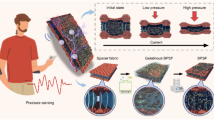Abstract
Thermoelectric generators (TEGs) convert heat into electrical energy. These energy-conversion systems do not involve any moving parts and are made of thermoelectric (TE) elements connected electrically in a series and thermally in parallel; however, they are currently not suitable for use in regular operations due to their low efficiency levels. In order to produce high-efficiency TEGs, there is a need for highly heat-resistant thermoelectric materials (TEMs) with an improved figure of merit (ZT). Production and test methods used for TEMs today are highly expensive. This study attempts to estimate the Seebeck coefficient of TEMs by using the values of existing materials in the literature. The estimation is made within an artificial neural network (ANN) based on the amount of doping and production methods. Results of the estimations show that the Seebeck coefficient can approximate the real values with an average accuracy of 94.4%. In addition, ANN has detected that any change in production methods is followed by a change in the Seebeck coefficient.
Similar content being viewed by others
References
C. Baker, P. Vuppuluri, L. Shi, and M. Hall, J. Electron. Mater. 41, 1290 (2012).
G. Min and D.M. Rowe, IEEE Trans. Energy Convers. 22, 528 (2007).
V. Zlatic and A. Hewson, New Materials for Thermoelectric Applications: Theory and Experiment (Dordrecht: Springer, 2013), p. viii.
A. Duffy and J. Morriss, Internal Combustion Engine Fundamentals, 1st ed. (Singapore: McGraw-Hill, 1988), pp. 1–7.
F.P. Zhang, X. Zhang, Q.M. Lu, J.X. Zhang, Y.Q. Liu, and G.Z. Zhang, Solid State Ion. 201, 1 (2011).
Y. Wang, Y. Sui, J. Cheng, X. Wang, and W. Su, J. Alloys Compd. 477, 817 (2009).
H. Su, Y. Jiang, X. Lan, X. Liu, H. Zhong, and D. Yu, Phys. Status Solidi A 208, 147 (2011).
D. Wang, L. Chen, Q. Yao, and J. Li, Solid State Commun. 129, 615 (2004).
Y. Song and C.-W. Nan, Phys. B Condens. Matter 406, 2919 (2011).
F.P. Zhang, Q.M. Lu, and J.X. Zhang, J. Alloys Compd. 484, 550 (2009).
Y. Zheng, H. Zhou, T. Ma, G. Zuo, H. Li, T. Su, C. Wu, H. Huang, D. Wang, and L. Yin, Bull. Mater. Sci. 37, 963 (2014).
K. Park and G.W. Lee, Energy 60, 87 (2013).
C.-H. Lim, S.-M. Choi, W.-S. Seo, and H.-H. Park, J. Electron. Mater. 41, 1247 (2011).
M. Gunes, M. Parlak, and M. Ozenbas, Meas. Sci. Technol. 25, 055901 (2014).
K. Gurney, An Introduction to Neural Networks, 1st ed. (London: CRC Press, 1997), pp. 13–16.
D. Graupe, Principles of Artificial Neural Networks, 3rd ed. (Singapore: World Scientific, 2013), p. 1.
N. Caglar, Constr. Build. Mater. 23, 3225 (2009).
D.T. Pham, E. Koc, A. Ghanbarzadeh, and S. Otri, in Proceedings of 5th International Symposium on Intelligent Manufacturing Systems (2006), pp. 38–46.
N. Derebasi, M. Eltez, F. Guldiken, A. Sever, K. Kallis, and H. Kilic, J. Electron. Mater. 44, 2068 (2015).
B. Ciylan, Electron. Elektrotech. 116, 63 (2011).
R. Quan, X. Tang, S. Quan, and L. Huang, J. Electron. Mater. 42, 1469 (2012).
A. Goudarzi, A. Mozaffari, P. Samadian, A. Rezania, and L.A. Rosendahl, Meccanica 49, 1211 (2014).
Values of Ca3Co4O9-based p-type thermoelectric materials in the literature. http://web.karabuk.edu.tr/fatihuysal/2.html. Accessed 25 Dec 2016.
T. Ekemen Keskin, M. Düğenci, and F. Kaçaroğlu, Environ. Earth Sci. 73, 5333 (2014).
S.J. Russel and P. Norvig, Artificial Intelligence A Modern Approach, 3rd ed. (New Jersey: Pearson, 2010), pp. 731–732.
R.J. Schalkoff, Artificial Neural Networks (Singapore: McGraw-Hill, 1997), pp. 109–111.
F. Laurene, Fundamentals of Neural Networks, 1st ed. (New Jersey: Prentice Hall, 1994), pp. 291–306.
H.Q. Liu, X.B. Zhao, T.J. Zhu, Y. Song, and F.P. Wang, Curr. Appl. Phys. 9, 409 (2009).
Performances of estimations made after the random comparison of training and test data. http://web.karabuk. edu.tr/fatihuysal/1.html. Accessed 25 Dec 2016.
Author information
Authors and Affiliations
Corresponding author
Electronic supplementary material
Below is the link to the electronic supplementary material.
Rights and permissions
About this article
Cite this article
Uysal, F., Kilinc, E., Kurt, H. et al. Estimating Seebeck Coefficient of a p-Type High Temperature Thermoelectric Material Using Bee Algorithm Multi-layer Perception. J. Electron. Mater. 46, 4931–4938 (2017). https://doi.org/10.1007/s11664-017-5497-6
Received:
Accepted:
Published:
Issue Date:
DOI: https://doi.org/10.1007/s11664-017-5497-6




